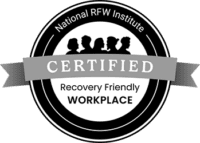From Surviving to Thriving: Achieving Long-Term Recovery
Current Recovery Statistics in the US
Substance use disorder (SUD) continues to affect millions of individuals across the United States, with drug overdose deaths being a significant concern for public health officials, policymakers, and communities nationwide. In 2022, there were 111,029 reported overdose fatalities. However, in 2023, the nation saw a decline in these deaths for the first time since 2018. According to the Centers for Disease Control and Prevention (CDC), an estimated 107,543 overdose deaths were recorded in 2023, representing a 3% decrease compared to the previous year. 1,2,5,6
The reduction in overdose deaths was largely attributed to a decrease in fatalities involving opioids, like fentanyl.5,6 Despite this overall decline, the change was not consistent across all states. Some states, such as Nebraska, Kansas, Indiana, and Maine, saw significant reductions in overdose deaths, while others, including Alaska, Washington, and Oregon, experienced increases. Although opioid-related deaths decreased marginally overall, fatalities involving substances such as methamphetamines, rose in 2023.5,6
While the decrease in overdose deaths offers a hopeful sign of progress in tackling the immediate impacts of SUD, individuals pursuing long-term recovery face ongoing challenges that require comprehensive support and resources.
Challenges of Long-Term Recovery
Long-term recovery from substance use or mental health issues involves navigating a variety of challenges. Here are some of the biggest challenges people often face in long-term recovery and daily living:
- Maintaining Motivation: The initial motivation for recovery can fade over time. Individuals may struggle to stay focused on their recovery goals.
- Processing Triggers and Cravings: Triggers can be people, places, or situations that remind individuals of their past substance use.
- Building a Support Network: Maintaining healthy relationships and building a supportive network is crucial for individuals in long-term recovery. But it can be difficult, especially if a person’s past relationships were centered around substance use.
- Managing Mental Health: Co-occurring mental health disorders can complicate recovery. Anxiety, depression, or other mental health issues might persist or arise during recovery.
- Finding Purpose and Fulfillment: Individuals may struggle to find purpose or direction after achieving stability, leading to feelings of emptiness or dissatisfaction.
- Developing Life Skills: Individuals in recovery may need to develop or improve life skills, such as financial management, employment skills, and healthy lifestyle habits.
- Dealing With Stigma: Stigma and discrimination against people in recovery can affect self-esteem, employment opportunities, and social interactions.
- Balancing Daily Responsibilities: Balancing recovery with daily responsibilities, such as work, family, and social obligations, can be stressful.
Despite these recovery challenges, data shows progress towards success. New data from the Substance Abuse and Mental Health Services Administration (SAMHSA) reveals that more people are seeking and successfully achieving recovery, particularly when supported by therapeutic recovery programs. Addressing these challenges involves a combination of personal effort, professional support, and a strong network of family and friends. Regular self-assessment and proactive management of recovery challenges can significantly contribute to sustained recovery.1 Managing daily life can be challenging on the journey toward long-term recovery, yet it is an essential part of maintaining overall health and well-being.
Daily Living Recovery Pathways
To help individuals navigate these obstacles and achieve lasting recovery, programs like Recovery Pathways by GoMo Health, offer essential support. This program is designed to augment active treatment and recovery in everyday living situations by equipping individuals with the tools needed to build inner strength, confidence, and a positive outlook for their future. The Recovery Pathways program supports individuals during and after their treatment, facilitating a smooth transition to a healthy, daily lifestyle.
Integrating innovative recovery programs into treatment plans allows health care providers, health systems, recovery centers, and more, to enhance their support offerings, ultimately leading to better outcomes for individuals striving for recovery. 1,2
How Does the Program Work?
The Recovery Pathways program provides participants (and their caregivers) with personalized content and resources, delivered directly to their mobile phones via short text messages. These messages offer support, tips, and reminders relevant to their treatment journey. Occasionally, participants receive links to additional resources containing actionable information to incorporate into their daily lives. This program is designed to reinforce lessons and skills taught in therapy and offer additional support to participants during their recovery journey, ensuring that each participant receives tailored support that aligns with their unique recovery needs.
Use Case: Recovery Pathways in Action
Rimrock, Montana’s largest addiction treatment center, provides comprehensive care for adults with substance use and co-occurring disorders, addressing the emotional, physical, spiritual, and social aspects of addiction. In collaboration with GoMo Health, the Recovery Pathways program was created to meet the needs of these individuals.
Why Integrate Recovery Pathways?
Through the Recovery Pathways program, recovery clinics, facilities, and health systems can empower individuals to overcome barriers to long-term recovery, helping them to not just survive, but to thrive in their new, healthier life. Program benefits include:
- Personalized Patient Support: Tailored guidance adapts to each participant’s unique needs, enhancing the effectiveness of their recovery journey.
- Empowerment for Healthier Choices: Resources focus on coping strategies and resilience to empower individuals to make healthier, informed lifestyle decisions.
- Comprehensive Recovery Tools: Techniques such as mindfulness, communication, and meditation are implemented to improve focus and mental clarity, which are essential components for sustained recovery in daily living.
By integrating innovative support systems and personalized care strategies, the Daily Living Recovery Pathways program transforms recovery into a sustainable wellness journey, fostering resilience and independence in every participant. Let’s work together to pave the way for lasting change and improved quality of life for those on the path to recovery.
References:
- Substance Abuse and Mental Health Services Administration. “SAMHSA.” Accessed [August 12, 2024]. https://www.samhsa.gov/
- National Center for Drug Abuse Statistics. “Drug Abuse Statistics.” Accessed [August 12, 2024]. https://drugabusestatistics.org/
- Addiction Group. “Addiction.” Accessed [August 12, 2024]. https://www.addictiongroup.org/addiction/
- GoMo Health. “Recovery Pathways.” Accessed [August 12, 2024]. https://gomohealth.com/recovery-pathways-workplace/
- Centers for Disease Control and Prevention. “CDC Reports on U.S. Overdose Deaths.” Accessed [August 12, 2024]. https://www.cdc.gov/nchs/pressroom/nchs_press_releases/2024/20240515.htm
- HealthDay. “U.S. Drug Overdose Deaths Decline for First Time in 7 Years.” Accessed [date of access]. Accessed [August 12, 2024] https://www.healthday.com/health-news/first-aid-and-emergencies/us-drug-overdose-deaths-decline-for-first-time-in-7-years







Find Us Online